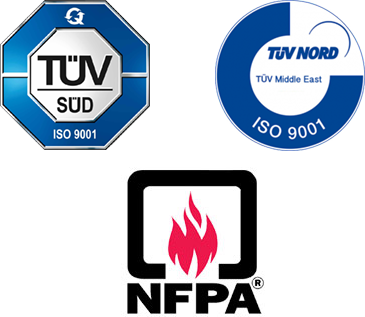Fire Alarm Control Panel
Advanced, Intelligent and Addressable.
Every hydrant has one or more outlets to which a fire hose may be connected. If the water supply is pressurized, the hydrant will also have one or more valves to regulate the water flow. In order to provide sufficient water for firefighting, hydrants are sized to provide a minimum flow rate of about 250 gallons per minute (945 liters per minute), although most hydrants can provide much more.

In some circumstances, water from a reticulated fire hydrant system can also be shared with other safety measures such as automatic fire sprinkler systems or fire hose reels. Under normal circumstances, a fire hydrant system is pressurized with water ready for emergency use. When a hydrant valve is opened, the system experiences a drop in water pressure.
The drop in water pressure is detected by a pressure switch which in turn starts the booster pump(s), drawing water from the water supply to increase the water pressure of the system.
Water from the hydrant is then directed through the lay flat fire hose to a nozzle which is then directed to the seat of a fire. During a fire the fire brigade may provide additional water and boost the water pressure to satisfy the demands of the fire hydrant system. This is carried out by connecting a fire appliance (truck) between an alternate water supply and the booster connection.




